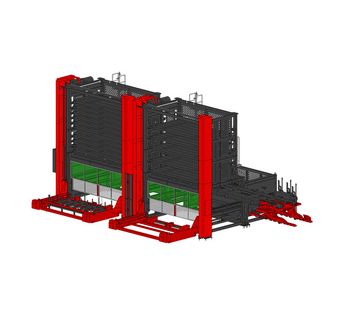
The manufacturing universe is at the centre of an epochal transformation. The dynamics of the contemporary market impose to maximize the efficiency of the productive cycles and to obtain the agility necessary in order to manage more and more frequent customizations and micro-lots by now to the order of the day.
The adoption of interconnected models (4.0) and the strong investments in industrial automation are aimed at adapting companies to more complex and challenging production dynamics than those of the past.
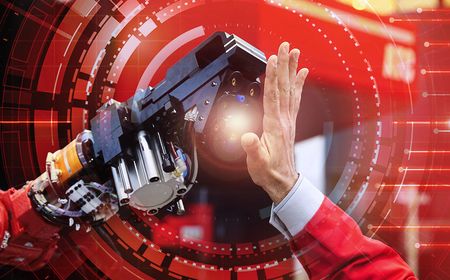
Industrial automation, a theme constantly updated
The theme of industrial automation, in particular, is evolving a lot. On the one hand, in fact, companies feel the practical need to relieve operators from all those repetitive, exhausting and sometimes dangerous activities that are part of the production cycles, on the other hand they work to create a new relationship between man and machine, that steps from mere “alternative” to a concept - much more modern and effective - of completion, synergy.

Two strands of industrial automation are therefore coexisting. One, more traditional, aimed at relieving people from the above activities; the other, connected to the world 4.0, aimed at leveraging automation to empower operators. In both cases, the positive reflection is not only on productivity, efficiency, time and costs, but also on the engagement of resources, which can be used for activities with greater added value and thus build a rewarding career path.
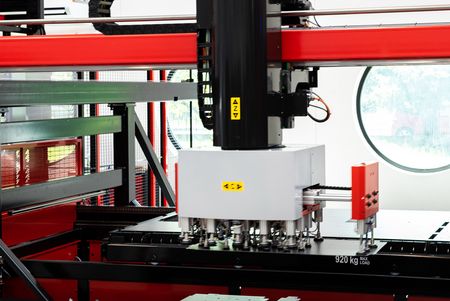
Faster and more efficient processes with AMADA automation
AMADA has developed over the years a lot of experience in terms of automation, which has always been conceived as a tool for optimizing processes, and not only at individual stages.
In terms of offer, AMADA automations cover the entire life cycle of sheet metal processing: from laser cutting to punching, but without forgetting bending, combined punching-cutting machines and automatic warehouses, that are for years one of the technological trends of the production and the internal logistics. AMADA also occupies a privileged position because it deals with both the production of the machines and the automations, and can thus guarantee a native synergy and uncompromising efficiency.
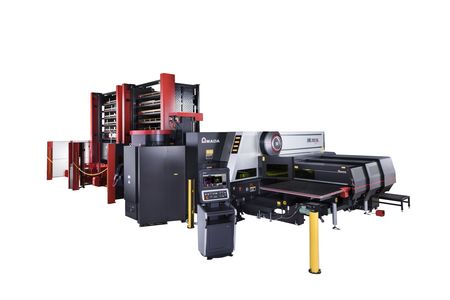
As an example, we can mention systems such as AS LUL II, which deals with the automatic loading/unloading of sheet metal from cutting machines, has a strongly modular and compact structure, a very high load capacity of pallets (3,300 kg/each) and can handle different types of material, in order to ensure uninterrupted production.
We could then mention some automations for combined machines such as AS-NTK + ULS-NTK, an integrated 2-tower system for the storage of materials and including part separation system
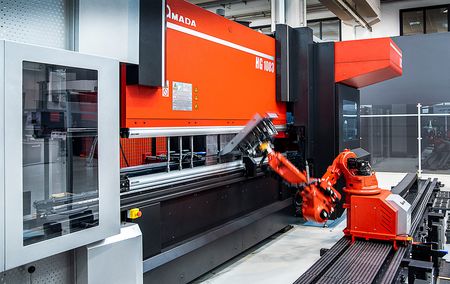
But we could also go further and mention the robotic bending solutions, which from robots come to the most complex automated cells like HG-Ars, which consists of a press brake with automatic tool change and an anthropomorphic robot dedicated to the rapid handling of the pieces, complete with automatic gripper gearbox unit (9 different grippers) that guarantees a reduction in cycle times.
Last but certainly not least, AMADA offers punching machines, bending machines and combined machines equipped with automatic tool changing technologies. As anticipated, this not only addresses a need for maximum productivity and cost reduction (related to equipment, an important item in the income statement), but also the improvement of working conditions, no longer bound to highly repetitive and exhausting activities.

Automation in the era 4.0
The manufacturing sector is a perfect candidate for automation, but it must be adopted correctly. As anticipated, the criterion of mere “replacement” is not a winning choice for companies, which instead can find benefit (including economic) in the synergy between the human and the automated component: it is no coincidence that cobot (collaborative robots) are one of the most interesting trends in this sector, which from 700 million dollars in 2020, could reach 2 billion by 2030, with a CAGR of 12% (source: Statista). Cobots focus precisely on the convergence between the human element, which can boast dedicated skills, experience and a decision making capacity much more evolved than artificial, and the resilience and speed of machines. All in one safe, controlled environment
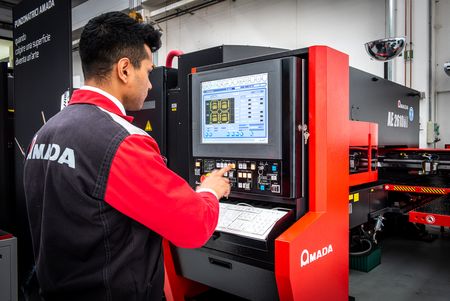
Even before cobots, automation means making the most of your resources. In a context 4.0, we think only about the possibility to program the machines offline, to recall programs already made, to distribute them on the machines and to be guided by them in the execution phase. All this is not part of the classic canons of automation, in which the machine performs the work, but in reality it is because the experienced operator values his competence and leaves to those who are less experienced the executive aspects of the operation. With an important benefit also for the latter, who in so doing develops their skills..
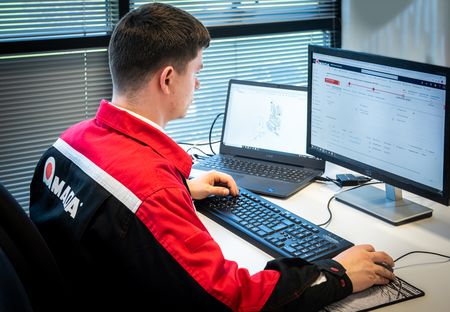
The future scenarios of automation
Automation is evolving a lot, driven by the mega-trend of Artificial Intelligence: a topic of great relevance is that of the predictive maintenance and its remote support, which consists - in fact - in (try) to automate the decision-making processes related to maintenance and assistance activities.
Actually, it is precisely these activities that best represent the value of the synergy between man and machine. Artificial intelligence has undoubted qualities when it comes to processing amounts of data unmanageable by human beings and detecting weak signals that are difficult to perceive.

But human decision-making is based on the correlation of a lot of different information, each of which has a different weight for the decision itself. This is why all innovative technologies and systems such as SIEM and SOC (Security Operations Center), but also remote monitoring and predictive maintenance activities, do not make important decisions on their own, but provide the experts with information and recommendations. It is then up to the experience and expertise of the operator to make an important decision, which will have an impact on the productivity and profitability of the enterprise.